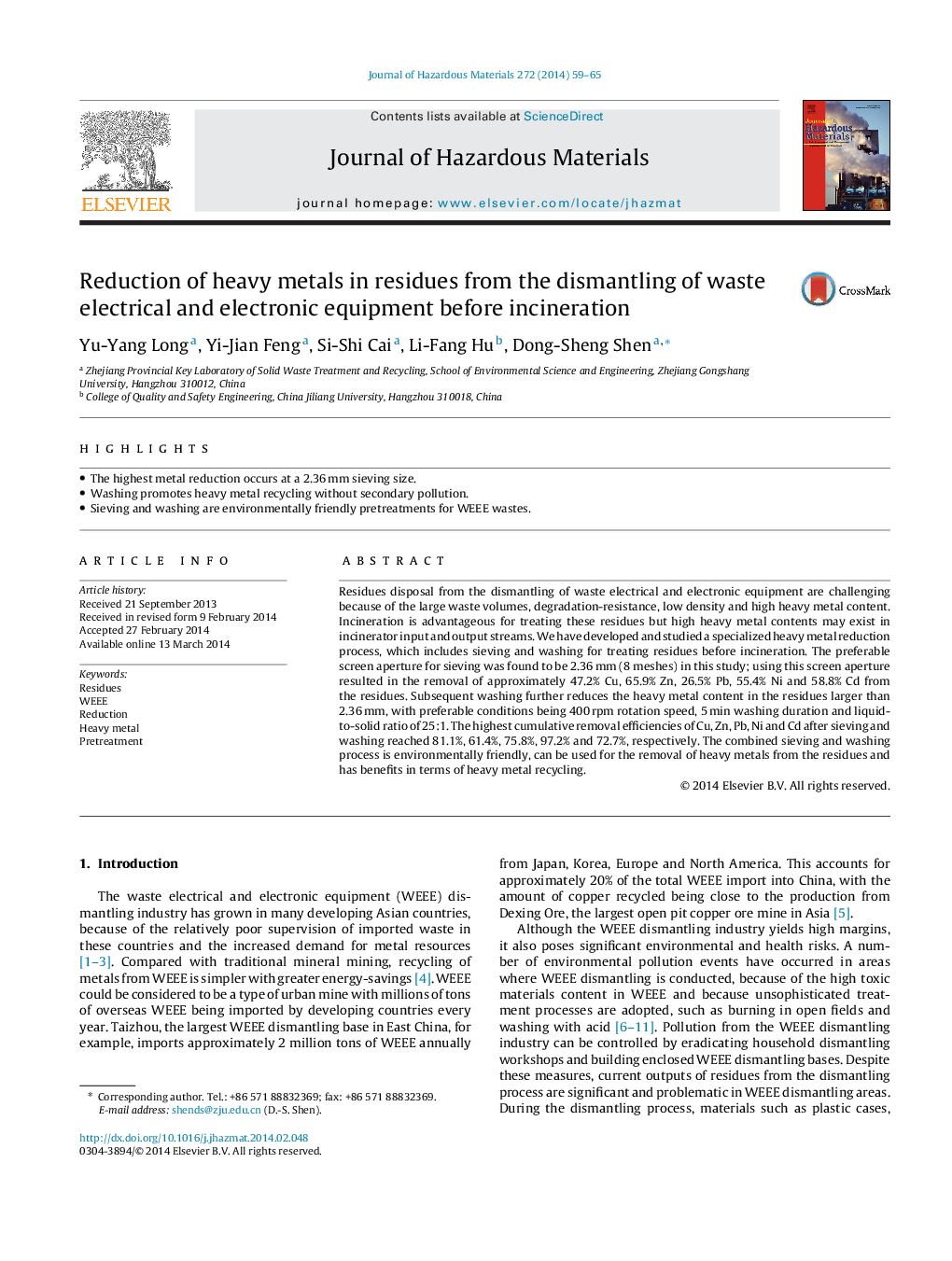| Article ID | Journal | Published Year | Pages | File Type |
|---|---|---|---|---|
| 576799 | Journal of Hazardous Materials | 2014 | 7 Pages |
Abstract
Residues disposal from the dismantling of waste electrical and electronic equipment are challenging because of the large waste volumes, degradation-resistance, low density and high heavy metal content. Incineration is advantageous for treating these residues but high heavy metal contents may exist in incinerator input and output streams. We have developed and studied a specialized heavy metal reduction process, which includes sieving and washing for treating residues before incineration. The preferable screen aperture for sieving was found to be 2.36Â mm (8 meshes) in this study; using this screen aperture resulted in the removal of approximately 47.2% Cu, 65.9% Zn, 26.5% Pb, 55.4% Ni and 58.8% Cd from the residues. Subsequent washing further reduces the heavy metal content in the residues larger than 2.36Â mm, with preferable conditions being 400Â rpm rotation speed, 5Â min washing duration and liquid-to-solid ratio of 25:1. The highest cumulative removal efficiencies of Cu, Zn, Pb, Ni and Cd after sieving and washing reached 81.1%, 61.4%, 75.8%, 97.2% and 72.7%, respectively. The combined sieving and washing process is environmentally friendly, can be used for the removal of heavy metals from the residues and has benefits in terms of heavy metal recycling.
Related Topics
Physical Sciences and Engineering
Chemical Engineering
Chemical Health and Safety
Authors
Yu-Yang Long, Yi-Jian Feng, Si-Shi Cai, Li-Fang Hu, Dong-Sheng Shen,
